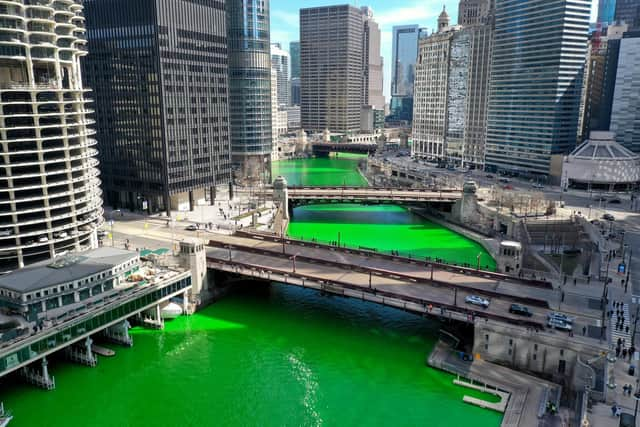St Patrick's Day: Why does Chicago dye its river green? Tradition explained and is it bad for the environment?
and live on Freeview channel 276
Chicago River is once again glowing green to celebrate St Patrick's Day.
But what was the inspiration for this tradition, how did it start and could it impact the environment?
Advertisement
Hide AdAdvertisement
Hide AdHere's everything you need to know about why Chicago dyes its river green.


Why does Chicago dye its river green for St Patrick's Day?
Chicago dyes its river green on the Saturday before St Patrick's Day to celebrate.
The tradition has been going on for over seventy years and was started by accident, by plumbers trying to clean up the waterfront.
The green river has since became a popular tourist attraction, with many people travelling to the city to see it and celebrate St Patrick's Day.
Where does the tradition come from?
Advertisement
Hide AdAdvertisement
Hide AdThe tradition happened by chance after the Mayor of Chicago in 1955 decided he wanted to remove pollution from the city river.
To identify the pollution in the water, plumbers used an orange solution, but when this mixed with the pollution, it turned green.
The river was first turned green to celebrate St Patrick's Day in 1962 by Stephen Bailey, who worked as a representative of the Chicago Journeymen Plumbers Local union and was also the co-chair of the St Patrick's Day Parade.
Ever since then, on the Saturday before St Patrick's Day, Chicago's river is dyed green by the descendants of two families from that plumbers union.
Advertisement
Hide AdAdvertisement
Hide AdThe make-up of the dye has changed throughout the years, but since 1996 they have used an environmentally-friendly solution which is made from vegetables.
Is it bad for the environment?
While we don't know the full impact of the dye, the plumbers who dye the river today use an environmentally-friendly solution made from vegetables.
Nicknamed, "Leprechaun Dust," the exact recipe of the dye remains a guarded secret.
More from the News Letter:
